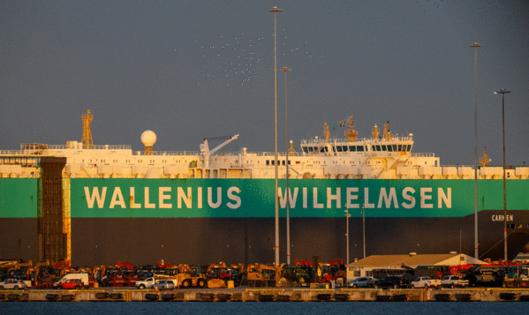Thousands of Baltimore port workers face uncertain future after Baltimore bridge collapse
Published in News & Features
BALTIMORE — Paychecks will soon run out for thousands of workers who handle cargo on Baltimore’s docks, and the region’s port is just starting on what could be a long, uncertain path.
Vessel traffic to and from the Port of Baltimore’s numerous terminals has been blocked since early Tuesday, when the Francis Scott Key Bridge was struck by a freighter and crumbled, killing six people. Two bodies were recovered while four more people are presumed dead.
With a partial port shutdown, little work is left for the longshoremen, counted among the port’s 19,970 cargo workers at both public and private terminals. For now, workers are unloading and delivering cargo from ships that docked north of the bridge before the container ship Dali hit a support pier just before 1:30 a.m. Tuesday. One more vessel, loaded with autos, offered a bit more work when it arrived Wednesday at Tradepoint Atlantic, the Sparrows Point logistics hub outside the blocked waterway. But work at what is typically one of the nation’s busiest ports is about to dry up.
“We have very little work left,” lasting maybe a week, said Scott Cowan, president of the International Longshoreman’s Association Local 333. “We’re going to have quite a bit of people out of a job and not receiving a paycheck very shortly. ... It’s going to be soon.”
The local represents about 2,500 members, and at least 2,000 are expected to be left jobless, Cowan said. But they are part of a much bigger daily workforce of 8,000 people, including terminal, rail and tugboat operators, pilots and truckers, who have been directly affected, Gov. Wes Moore said in a news conference Thursday evening.
In Annapolis, state legislative leaders shared a draft of a bill Friday that might help.
Under the proposal, the Department of Labor would create a temporary financial relief program for people who regularly perform paid work at the port, can’t return to work because of the closure or don’t qualify for unemployment while the Port of Baltimore is closed.
Estimates of how long it will take to clear and reopen the shipping channel range from weeks to months. Crumpled sections of the bridge and the damaged freighter clog the Patapsco River, while recovery efforts continue. On Thursday, federal officials approved an initial $60 million request from the Moore administration to cover preliminary costs for mobilization, operations and debris recovery.
The number of direct and indirect jobs feeling the impact, at least 100,000, represents about 10% of total employment in the Baltimore area, said Jeremy Schwarz, chair of economics at Loyola University of Maryland’s Sellinger School of Business. That may be a conservative number, he said, because estimates of indirect jobs, such as suppliers and truckers, may leave out businesses such as restaurants whose customers are port workers.
“Those workers and their families are certainly going to be hurting without relief,” Schwarz said. “That’s going to be a big strain on those families, of course through no fault of their own.”
...continued
©2024 Baltimore Sun. Visit baltimoresun.com. Distributed by Tribune Content Agency, LLC.







Comments